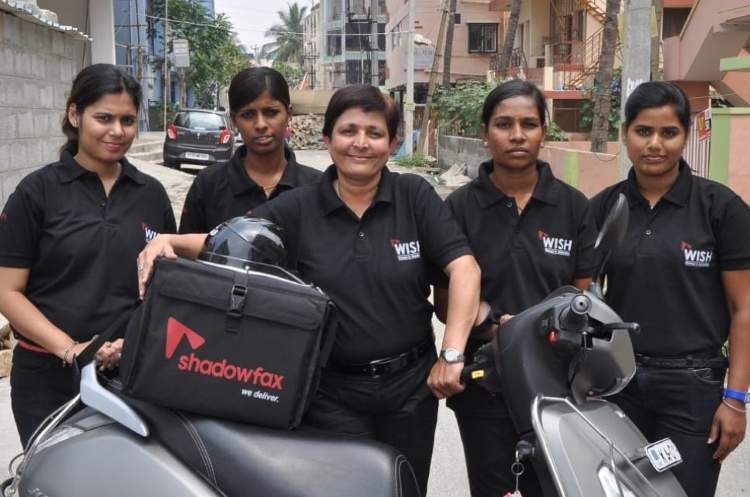
Invisible labour of the gig economy: The hyper-convenient lifestyle of India’s urban elite is often celebrated as a triumph of national progress. Algorithms now choreograph the delivery of food, groceries, and domestic services with surgical precision. Platforms scale; investors cheer. But beneath this seamless experience lies a fragmented gig workforce—overworked, unprotected, and largely invisible.
These are the blue-collar workers who ferry us across cities, deliver our packages, and bring meals to our doorstep. They constitute a massive informal workforce, structurally excluded from basic protections. We celebrate the hustle of start-up founders who work long hours. But we ignore the millions of gig workers who log in at dawn and toil until midnight—not to build a unicorn, but to survive.
READ | Broken bank credit pipeline is choking MSMEs, startups
India is rushing headlong into a tech-driven future. Yet, innovation without inclusion is not progress—it is peril. This is not a question of intent. It is a question of attention. And the cost of inattention will be systemic.
Flexibility or full-time exploitation
Gig work in India is marketed as flexible, empowering, and fast-paying. In reality, gig economy operates with full-time, high-risk labour stripped of safeguards. Unlike the West, where gig work supplements other income, most Indian gig workers rely solely on platforms for their livelihood.
To earn even a subsistence income, many begin work before sunrise, stay logged in for 10–12 hours—much of it idle—and face algorithmic uncertainty around payouts. They are tracked, rated, and penalised by opaque systems that offer neither transparency nor recourse. The tools of their trade—vehicle, fuel, mobile phones, maintenance—are self-financed. But the benefits of employment—paid leave, health insurance, or accident cover—are non-existent.
In a gig economy, work must go on. But the worker? He is disposable. Replaceable by design.
A culture of deliberate forgetting
Despite the scale and intensity of this exploitation, public discourse remains curiously unmoved. Startup founders speak fluently of scale and convenience, but rarely of the human cost that underpins it. Platform companies host high-profile panels on inclusion, while their workers log back into apps to compete for pennies.
Investors optimise for efficiency, not worker safety. Media celebrates innovation, not exhaustion. The elite consumer, seduced by instant deliveries and cheap rides, sees speed—not sacrifice. This is not a collective oversight. It is structural amnesia: a deliberate forgetting, baked into the very design of digital growth.
When national progress is measured in app downloads and startup valuations, there is no metric for fatigue, injury, or burnout.
Gig economy as strategic infrastructure
What is often overlooked in boardrooms and policy panels is this: gig workers are not merely a vulnerable demographic. They are a strategic layer of the Indian economy. Their labour lies at the intersection of consumption, urban mobility, digital infrastructure, and employment generation.
When this workforce—projected to reach 23.5 million by 2030—lives in chronic precarity, the economy built atop their labour becomes unstable. Without health insurance, gig workers delay or avoid medical care, escalating long-term costs for public hospitals. Without injury or unemployment protection, they fall back on families and community support, intensifying pressure on welfare systems and state finances.
Most will age into poverty, relying on underfunded pension schemes, subsidised housing, and public assistance. A vulnerable gig workforce does not bootstrap itself into security. It transfers its burden to the future—and to the very elite class that profits from its present-day disposability.
Policy void and its consequences
India’s regulatory frameworks remain behind the curve. Labour codes continue to treat gig workers as a peripheral, experimental category—rather than the economic core they have become. States like Rajasthan, Karnataka, and Telangana have introduced laws to extend social protection, but enforcement remains inconsistent and largely symbolic.
Good intentions do not ensure compliance. Penalties do. Yet the regulatory approach remains fragmented, with no harmonised national policy. This patchwork of protections undermines benefit portability, creates compliance confusion for platform companies, and entrenches inequality among workers doing identical jobs across state lines.
Building a just digital economy
India can scale a digital economy defined by speed and extraction—or build one grounded in dignity and security for its workforce. Protecting gig workers is not an act of charity. It is economic self-preservation.
A workforce that is over-leveraged, exhausted, and ignored cannot sustain long-term growth. These are not anecdotes of hardship. They are early warning signals. If policymakers fail to act, they risk corroding the very foundations of India’s development model.
And the blindness of the intelligentsia will not last forever. Because when megastructures collapse, they do not fall selectively—they take everyone down with them.
Dr Anjana Karumathil is Associate Professor of Practice at IIM Kozhikode.
